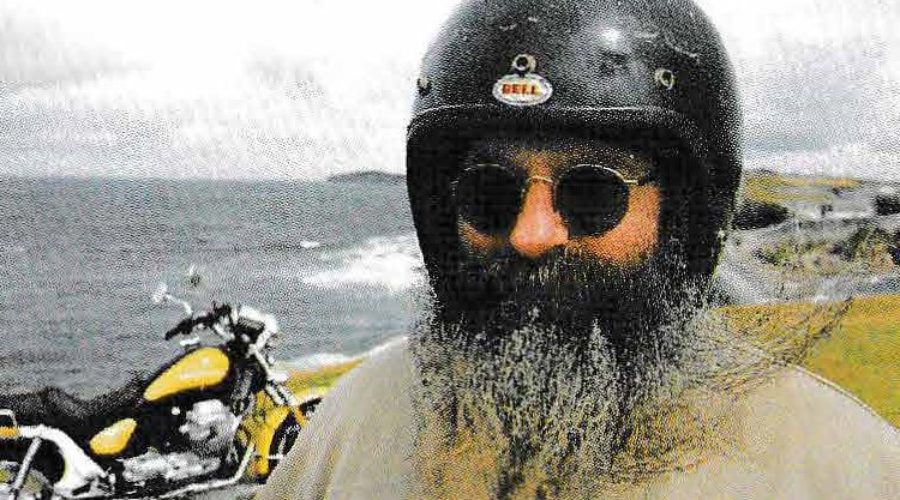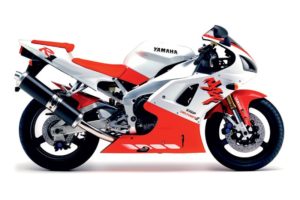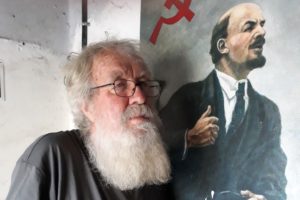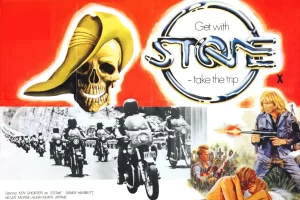Mr Smith: Only the Lonely
Back in the dim, distant years of my youth I immersed myself in the written word. This was due to the fact that my now unfortunately deceased uncle possessed a library of some magnitude which he had accumulated over a period of years when he was but a mere youth and later as a journalist of some repute.
One of the types of literature Mon Oncle was partial to in those far gone days was written by your much maligned 19th century Russian authors, blokes like Tolstoy, Dostwhatsisname, et al.
In particular he liked a bloke called Nicolai Gogol, since the Unc was politically a tad on the rouge side and favoured tales where the little bloke, after a mighty struggle and great privation, got his bum kicked by the system after all.
At the tender age of eight years I used to pore over a particular tome of Gogol’s stories given to me by the late uncle and entitled “Taras Bulba And Other Stories”.
Naturalich, at that tender age, adventure and the like was high on my list of fictional subject matter.
Now, you may or may not have seen the cinematic offering entitled “Taras Bulba”, starring that famed anti-smoking campaigner and cadaver, the less-than-hirstute Yul Brynner (whose real name was Youl Bryner … got me baffled as to why he changed the spelling).
Well, that film resembles the book in much the same way as the things the pleece prosecutor tenders in court as the “facts” resemble the facts – if you get my drift.
The fillum tends to omit around about the last half of the book for a start and, along with other stuff, those Movie Moguls seem to have forgotten that the book’s not about the Cossacks at all.
Actually, I have it on good authority that Gogol wrote it after visiting the bike races at Bathurst in 1983, although the late, beloved uncle would probably argue otherwise. He would have sworn that it was about the Maitland floods.
Enough of that drivel. One of the lessons in “Taras Bulba” is the dreaded “He rides fastest who rides alone.” Well, it doesn’t actually say that, but it certainly suggests it at several stages, and such is the impression I gained as a mere slip of a lad. Indeed, at later stages in my life I have searched for books which espoused that same belief, although the uncle would often chastise me with his classic supposition that just as it was unwise to believe everything I read, also was it unwise to read only those things in which I believed.
I had other ideas, however, and would continually search the shelves of the uncle’s basement library. At the age of 14, when I had already discovered motorcycles, I discovered TE Lawrence’s (that’s Lawrence Of Arabia) autobiographical masterpiece, “The Mint”. I found the book to be a bit of a struggle to wade through but, on the other hand, I couldn’t put the bugger down.
It’s the story of a bloke who believes in his heart that he’s totally alone and detached from the rest of the world. He’s in the airforce in the days before the airforce was considered a valid arm of the services and, as a result, the lower ranks were treated much lower than the lowest of the low in the other arms of the services.
This was, of course, to Lawrence’s liking, since he wanted to not only hide from the world but also to atone for his sins of excess which he believed he had committed in the various deserts in which he fought during the Primary Global Altercation.
Now, whether Lawrence was right or wrong about this, “The Mint” is a brilliant commentary on institutionalized life. (Don’t panic . . . I’ll get to the point soon.) Lawrence saw first hand that power and the abuse of same engenders in the wrong sort of person (like magistrates and pleece) an almost sexual desire to physically abuse those whose lives are within their power.
This, of course, had a rather laxative effect on Our Hero and, in order to escape from the oppression of his masters, Lawrence used to go for a spin on his bike.
It’s a tough life in the Hero business (as any Roger Ramjet fan will tell you) and, as a result of his fame, Lawrence had friends in Very, Very High Places. He also had a quid or two (and there is some contention as to exactly where these quids came from) with the result that the motorcycle he favoured was, as one of his biographers (Michael Yardley) has pointed out, “an SS100 Brough Superior, the fastest motorcycle of its day, in which the engine design vastly exceeded the handling and brakes.”
That his last (and how could it be any other) machine finally killed him (although there is some speculation that he was murdered) is known by many, but the fact that it was his habit to regularly ride 200 miles per day while he was in the RAF in order to defuse the tensions built up during the day under the heel of vicious authority is not.
‘The extravagance in which my surplus emotion expressed itself lay on the road. So long as roads were tarred blue and straight; not hedged; and empty and dry, so long was I rich,” he wrote in a chapter subtitled “The Road”.
He went on to explain to the reader in very dry terms that “a skittish motorbike with a touch of blood in it” is around about the best fun one can have with one’s clobber on. Yes, there was a dedicated motorcyclist!
You’ve probably been wondering why I’ve decided to drag out the old Lawrence Of Arabia tales at this point and there is, indeed, a very plausible reason for doing this. Lawrence originally tried to prevent “The Mint” from being published at all. When he did agree to allow its general publication, it was on the grounds that it be published only after the turn of the century or thereabouts.
After some argument, an expurgated version was printed by Panther in order to cash in on the massive publicity surrounding the film “Lawrence Of Arabia” which starred the 6 feet 3 inches tall Peter O’Toole as the 5 feet 3 inch tall Lawrence.
Since that time I have been scouring the shops searching for a copy of the Panther paperback to replace the very battered copy given to me by my aunt to replace the copy which fell apart about 15 years ago.
Well, I was in a bookshop the other day where I was informed that an unexpurgated version of “The Mint” was now available in Penguin paperback form for around $10. There’s only a couple of short chapters about Lawrence’s bike(s) in the book, but it bears nearly as much relation to motorcycling and the type of people who find themselves attracted to motorcycles as does Persig’s classic “Zen And The Art Of Motorcycle Maintenance”.
I reckon it’s definitely worth a read. If you don’t feel like buying it, hassle your local library until they buy it and then borrow it. You see, Lawrence had also learned the invaluable lesson that “He rides fastest who rides alone”. And very few of us will ever be as lonely as Lawrence was.
And while we’re on the subject of loneliness (which is what I was getting to all along), my Dear Departed Daddy used to say to me often that “A motorcycle is the transportational device of the selfish and the lonely”.
Well, I’m not sure I don’t disagree with him these days, despite the fact that, at that time, I wasn’t real keen on his giblets. If it’s selfish to want to enjoy oneself along some deserted road with only the wind and the sun for company while, as Omar Khayyam once said, the speed ” … clears your mind of past regrets and future fears,” then I suppose I am selfish.
And, if the faster I go then the clearer my mind becomes, then I must be lonely since “He rides fastest who rides alone”. And, on some days, I ride, as Lawrence rode, very fast indeed.
Sometimes I think it would be admirable to have a companion with whom to traverse life’s hills and vales and to share the riding as we blast along mortality’s version of Bell’s Line Of Road. But then I remember CJ Dennis’ admonition: “Why should I be rooked for half my tucker, just to get it cooked.”
Cop you later.
By Peter Smith. Two Wheels, July 1987.




